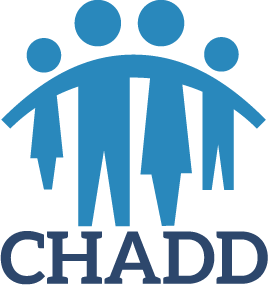CHADD Testifies at FDA Meeting
Robert J. Cattoi
Attention Magazine December 2020
Download PDF
The US Food and Drug Administration recently asked CHADD CEO Robert Cattoi to provide comments regarding the development of abuse-deterrent ADHD stimulant medications. Below is a summary of the comments he presented to the joint meeting of the FDA’s Psychopharmacologic Drugs Advisory Committee and the Drug Safety and Risk Management Advisory Committee on October 8, 2020. You can also read the full statement on the CHADD website.
An estimated 4.4% of U.S. adults (nearly 10.5 million adults) meet criteria for ADHD in the United States. ADHD must be viewed as not just a neurobiological disorder supported by mental health and special educational professionals, but as a public health problem producing a substantial impact on the health, quality of life, and economic viability of the US population.
Individuals with ADHD are at greater risk than unaffected individuals for many other mental health conditions as well as physical illnesses. Economic costs of ADHD in the United States range from $143 to $266 billion annually. This makes ADHD a far too costly disorder to continue to be undertreated or even ignored in not just mental health settings but especially by primary care, government public health programs, third-party payers, and particularly among adults.
Fortunately, ADHD is a condition for which a multimodal treatment approach using medication and behavioral therapy has been shown to be effective. Treatment allows individuals to focus, work, and learn. Stimulant medications are generally the first-line medical treatment for ADHD as they are highly effective at reducing symptoms.
Although prescription stimulants are often highly effective, problems of non-medical misuse and abuse of prescription stimulants among adolescents, college students, and adults has become evident. Estimates of non-medical use of stimulant medications vary widely depending on the definitions used in different studies. A population-based estimate from the National Survey on Drug Use and Health reported that approximately five million adults had engaged in non-medical use of stimulant medication at least once in the last year. Data from 2005–2010 show an increase of between 67–156% in emergency room visits for non-medical use of stimulant medications. Poison Control Center data reveal that the odds of dying from non-medical use of stimulants is 13 times greater for nasal abusers and 22 times greater for intravenous abusers than for oral abusers.
The development of abuse-deterrent formulations (ADF) of stimulant medications may provide a means of reducing abuse. It is important to recognize that most individuals who abuse stimulant medications do so through an oral route, which may not be deterred by ADFs. But given that 38–40% of stimulant misusers are doing so via intranasal and intravenous use, we support the development of a stimulant that has abuse deterrent physical features.
CHADD applauds any steps that reduce misuse and abuse of these medications without impeding access and affordability for those who require them for treatment. Considering rampant misconceptions about ADHD treatment, the stigma surrounding the disorder, and other external pressures, individuals with ADHD often face significant barriers to accessing prescribed medications. We respectfully urge the FDA to consider these systemic burdens on the ADHD population. Any steps to reduce stimulant abuse must not be taken at the expense of ADHD patients’ access to required medical treatment. It is imperative that any FDA actions to reduce stimulant abuse, including approval of abuse-deterrent formulations of prescription stimulants, not exacerbate current coverage and access hardships.
Robert J. Cattoi is the chief executive officer of CHADD.
Other Articles in this Edition
Mountain Biking and Holistic Personal Development
School-Based Services for Children with ADHD
What Do Students with Attention Challenges Really Think About Remote Learning?
Resilience in the Midst of Difficult Times
Teaching in a Pandemic: Upheavals, Adjustments, and Moving Forward
Special Education and the Pandemic
Use Chrome Extensions to Reduce Distraction and Increase Productivity
ADHD Helped Me Find Success in Pivoting a Business During the Pandemic
